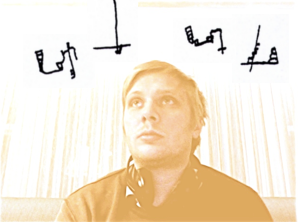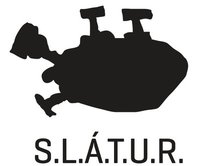May 25
Tónsmíðavika í GarðiS.L.Á.T.U.R. vinnustofa fyrir skapandi tónlist 19.-25. júní
Tónsmíðavika S.L.Á.T.U.R. er fyrirbæri sem hefur verið haldið tvisvar áður. Árið 2007 var slík hátíð haldin á Eiðum en þar komu fram tónskáldin og tónlistarmennirnir Fred Frith, James Fulkerson og Frank Denyer auk meðlima í S.L.Á.T.U.R.. Tilgangurinn er sem fyrr að mörg tónskáld hittist í eina viku, vinni mikið og hratt, veiti hvort öðru aðhald og bæði hvatningu og gagnrýni. Tónsmíðavika S.L.Á.T.U.R. 2011 fer fram í Garði á Suðurnesjum. Á henni er ekki stefnt á að hafa neina kennara eða nafntogaðar persónur sem leiðbeinendur heldur verður kastljósið á þáttakenndum sjálfum. Öll tónskáld geta sótt um, óháð aldri, kyni, þjóðerni o.s.fr.v. og dómnefnd mun velja tónskáld á faglegum forsendum þar sem tekið er tillit til menntunar jafnt sem reynslu.
Fyrirkomulagið er þannig að fólk kemur saman og semur tónlist á daginn sem er síðan leikin á kvöldin af atvinnuhljóðfæraleikurum á opnum æfingum. Auk þess halda tónskáldin kynningar á verkum sínum. Öllum er boðið að koma á opnu æfingarnar og kynningarnar en á föstudagskvöldinu eftir fimm daga tónsmíðavinnu eru haldnir tónleikar í Garði.
Um hljóðfæraleik sér Mardiposa kvartettinn. Meðlimir Mardiposa eru Bára Sigurjónsdóttir (tréblásturshljóðfæri), Bergrún Snæbjörnsdóttir (málmblásturshljóðfæri), Heiða Árnadóttir (rödd) og Helga Kristbjörg Guðmundsdóttir (harmónikka). Auk hljóðfæra Mardiposa kvartettsins stendur tónskáldum til boða að smíða ný hljóðfæri í Garðinum.
Matreiðslumaður er Halldór Úlfarsson einnig þekktur sem mynd-, högg-, hljóðfæra- og þúsundþjalasmiður.
Samtök listrænt ágengra tónsmiða umhverfis Reykjavík eru samtök sem leggja áherslu á tengsl og gildi samstarfs. Einnig leggja samtökin áherslu á faglega sjálfsmenntun í samfloti við jafningja. Í samtökunum tengist fólk og auðgar hugmyndaheim hvors annars og aðstoðar hvort annað við tilraunir. Margir aðilar hafa komið inn í samtökin í gegnum tónsmíðavikurnar. Á tónsmíðavikunni getur utanaðkomandi aðili gengið inn í tilraunamennskuna, hver og einn fylgir sínum hugmyndum en lærir af öllum í kringum sig. Þetta er grasrótarstarf sem er ætlað að auka vegsemd listrænt ágengrar tónlistar á Íslandi og víðar.
Á tónsmíðavikum verða oft miklar framfarir í starfi samtakanna og einstaklingana því á þessum samkomum er margt að læra, og allir þroskast af því að fara í gegnum róttækar tilraunir sem geta bara átt sér stað þegar fólk er lokað saman í viku.
Allir tónleikar, opnar æfingar og fyrirlestrar eða kynningar verða teknar upp og gefnar út fyrir þáttakenndur næstu tónsmíðaviku.
Umsjónamenn hátíðarinnar eru þeir Áki Ásgeirsson, Ingi Garðar Erlendsson, Magnús Jensson, Hlynur Aðils Vilmarsson, Þorkell Atlason og Guðmundur Steinn Gunnarsson.
Dagskrárdrög:
> sunnudagur (19.jún): mæting um kaffileytið, tónskáldin kynnast staðnum
>
> mánudagur (20.jún): vinnudagur, kynningar um kvöldið
>
> þriðjudagur (21.jún): vinnudagur, kynningar um kvöldið
>
> miðvikudagur (22.jún): vinnudagur, opin æfing um kvöldið,
>
> fimmtudagur (23.jún): vinnudagur, æfingar eftir hádegi, kynning um kvöldið
>
> föstudagur (24.jún): tónleikar í samkomuhúsinu
>
>
> laugardagur (25.jún): hugsanlegur auka-performans
>


May 15
About Musical InstrumentsAn article by Magnús Jensson and Áki Ásgeirsson.
Written in February 2011
A musical instrument has three different components: the controller, the sound generator and resonance. The controller component is the instruments user interface and is the area of human interaction. The sound generator is for example a vibrating string, an air column in wind instruments, the membrane of a drum or an electronic oscillator. Resonance is the amplification component, for example the sounding body of string instruments or a loudspeaker.
Note that sometimes the human player becomes himself a part of the instrument, either partially as in the case of brass instruments, where the lips vibrate to produce the sound, or completely as with singers, where the interface, sound production and resonance are all inside the human body. The role of external acoustics is of variable importance, but is in some cases essential for the instrument.
All three parts can be powered by the performer or external sources of energy.
Historically, these components are close together. Ancient instruments are usually self-contained; their interface, sound generators and amplifying bodies are closely connected in space and there is not much distinction between these parts. For example, a string instrument like the guitar or lute has an interface (the strings) which also generates the sound. The strings are connected directly to a resonating body which amplifies the sound. Drums, voices, ancient flutes and horns have the same clear connection of interface, sound generation and amplification.
With further technical improvements, the distinction between these parts has grown apart. One of the most advanced instruments of the 15th-18th centuries was the church organ. It’s components are quite separated, with a unified keyboard interface that is remotely connected to different sets of pipes, providing distinction between the performance and the audible result. One goal of the organ was to imitate, replace or accompany instruments of the ensemble, like was later the case with many synthesizers of the 80’s. Organs where externally powered since in the antiquity.
During the 19th century, many musical instruments went through a technical reconstruction. To meet the increasing size of concert halls, they were made more resonant and with a brighter sound spectrum that could cut through the growing orchestras. Also, 19th century harmony demanded chromatic instruments that could play evenly sounding scales in any key. Non-chromatic, soft, unevenly sounding instruments did not survive.
An instrument like the piano has, like the organ, a clear distinction between interface and sound generation. The keyboard is what concerns the performer, and the mechanics of the string-hitting hammers is not relevant to anyone enjoying the music, it is hidden from view; inside a black box. There is no more visual connection to the strings, only with the interface.
The 20th century electronic instruments continue to make further separations. The Theremin (1920) moves the performer away from the instrument, creating an invisible distance connection. The Ondes Martinot (1928) uses a familiar keyboard interface but adds resonating gongs (and string) to the amplification stage in the speaker cabinet.
The speaker is regarded as the body of the instrument. The speaker is not seen as a separated “neutral” unit. The electric guitar (1931) also uses an amplifier as an indispensable part of the instrument. The power and size of guitar amplifiers and amplification systems has grown considerably over the decades, opening up the possibility for very loud types of music styles performed for a large number of audience. The separation of the amplification component therefore became a prerequisite for the ritual of massive musical events.
Besides using external amplification, MIDI synthesizers usually separate the interface component from the sound generator. A synthesizer controller, usually a keyboard, sends note messages to the sound module which interprets them into musical sound. With MIDI, it is possible to send musical information over long distances in real-time or as a MIDI file to be played by different sound generators.
Since electronic music is mostly made with computers today, a great development has been on new interfaces and controllers. Distribution of music has also shifted from physical objects (vinyl, CD’s / concert amplification) to digital form (mp3, wav / headphones and computer speakers). This combined increases further abstraction of musical material in the creative process, as well as detaching the ‘end-user’ amplification stage. The world’s loudspeakers are now open for the creative musician. Maybe more importantly for the creative development, the world’s computational hardware is interconnected and ready to act as sound controllers and generators.


4. maj, 20:00 – 23:00
Von, sal S.Á.Á., Efstaleiti 7
Miðvikudaginn næstkomandi, 4.maí verða haldnir tónleikar með tónverkum eftir Guðmund Stein Gunnarsson í S.Á.Á. salnum Von í Efstaleiti 7. Tónleikarnir munu hefjast klukkan 20:00 og aðgangur er ókeypis. Þar verður meðal annars lifandi frumflutningur á verkinu Mardiposa sem vann nýverið verðlaun í tónverkasamkeppni í tilefni að 80 ára afmæli Ríkisútvarpsins. Verkið var leikið í útvarpi á Páskadag en verður nú flutt á tónleikum í fyrsta sinn. Auk þess verða leikin önnur nýleg verk, m.a. úr svokallaðri Kvartettaröð Guðmundar Steins, einnig verk úr Hrammdælu röðinni sem og upplestur á hljóðljóðum og stutt myndskeið sem varpa ljósi á tónsmíðar Guðmundar Steins.





